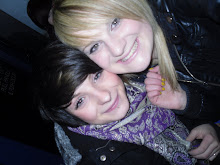Moral Panic - (aids, youth uprising, child abuse, paedophilia)
- Breakdown/lack of morals - performed by the 'folk devil'
- Large public outcry - people feel threatened and want to resolve it.
- Gap in the media - how do they cover it?
- Something that happens which causes a moral discussion - needs to be sorted out.
Abstract concept used to make sense of "irrational public hysteria"
Public and academic debate on moral panic works on the assumption that the media plays a significant role in determining the characteristics of a moral panic.
This signifies a complex process that shapes public perceptions of a perceived threat to the moral code of society.
Process Model:
Applies to process of a moral panic. 7 defined stages (Stanley Conon "folk devils & moral panics" 1973)
1. Emergence: when a form of behaviour becomes perceived as a threat.
2. Media inventory: explanation of the threat is manipulated by media (desertion exaggeration)
3. Moral entrepreneur: group organisation speak out and offer solutions.
4. Experts: socially accredited experts who diagnose solutions
5. Coping resolutions: reaction of the media, moral entrepreneurs and experts leads to legal reform.
6. Fading away: the condition disappears; submerging into the culture, or deterring becoming less visible.
7. Legacy: a moral panic has a long term effect and creates big changes in social policy, the law or society's views on itself.
Attribution model: Eric Goode & Nachman
Ben Yehudah Study - "Moral panics = social construction of deviance" (1994)
Claims those working in the media, political insitutions of the legal system impact on moral panics through "claims making."
- 5 elements of criteria distinguish attributes of moral panics.
1. Concern - a heightened level of concern, measurable through opinion polls etc.
2. Hostility - increased hostility to a group or category - seen as 'enemy' to respectable society (folk devils)
3. Consensus - a sustained segment of social agrees that the threat is caused by wrong doers.
4. Disproportionates - the reaction by the public is out of proportion to the cultural harm.
5. Volatility - the idea that moral panics are volatile by nature, erupts quickly but also often subsides quietly - each episode cannot be sustained for long.
Wednesday, 14 October 2009
Subscribe to:
Posts (Atom)
